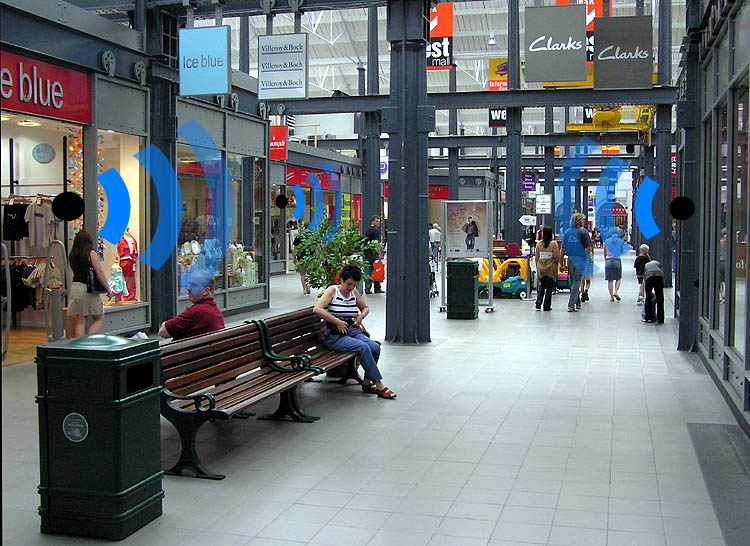
Proximity Marketing
By: Sentry Marketing Group
April 13, 2015
Proximity marketing takes advantage of smartphone technology to encourage customers in the store to make immediate purchases or visit departments they may not have otherwise. Read on to see how it works.
We recently published an article looking at the many ways marketers and business owners and executives are taking advantage of technology to bridge the offline-online gap with their customers. These technologies focus on connecting customers in-store or passing by with online content designed to increase their awareness of the brand and encourage them to become customers.
Statistics from JiWire quoted in an October 8, 2014 article from Forbes:

In this article, we discuss a related but distinct approach known as proximity marketing, which, though it also takes advantage of smartphone technology, is less concerned with connecting customers to online material as it is with encouraging existing customers to make immediate purchases they may not otherwise have made.
This is done by sending customers who have opted in offers or relevant information related to specific products or promotions while they are in the store. This opt-in is usually the downloading of your app, either before they enter or at prompting from signage offering some exciting benefit of doing so. The app then essentially send push notifications once the customer is in the store. What happens once they have opted in will depend on the technology you are utilizing.

Bluetooth and Wi-Fi
For some time now, retailers have been using Bluetooth and Wi-Fi to connect with customers. Generally, what happens is that a message containing some sort of special offer (“All red shoes 35% percent off for the next 35 minutes!”) or other call to action (“Don’t forget to stock up sunscreen. 75 and sunny all weekend!”) is sent automatically when the customer’s smartphone either comes into range of the store’s Bluetooth transmitter or when they connect to the in-store Wi-Fi. This can be especially effective for letting customers know about promotions and sales and for getting them to visit areas of the store they might not otherwise venture into.

Image from Proitzen
In Canada a few years ago, brands like Coca-Cola, Cadbury, Red Bull and Kraft began pushing special offers through Bluetooth-enable signage in one of the country’s larger convenience store chains.
Bluetooth Low Energy (BLE) Beacons
While Bluetooth and Wi-Fi marketing can be very effective, some marketers have been keen to be even more precise in targeting the customers most likely to buy the items being promoted. Enter Beacon and similar technologies. These use BLE signals, which are much more localized, so, rather than sending a message about a sale on red shoes to every customer, many of whom will have no interest in or use for them, the message is sent only to customers already in the ladies’ shoe department, or even just to those standing in front of the shoes in question.
While this may miss out on some customers who wouldn’t otherwise visit the department, it hits those most likely to make a purchase at exactly the point when they are most likely to decide to do so, and can give them the extra push to go ahead and put the item in their basket.
Some examples:
At South by Southwest (SXSW) this year, organizers placed some 1,000 proximity beacons in and around hundreds of SXSW venues prompting visitors to check in on social media, providing notifications of performances, screenings and demos going on in the immediate vicinity, and even matching up attendees who shared similar interests.
Hudson’s Bay Company, one of the first major retailers to launch a North American beacon campaign, enabled shoppers with the SnipSnap app on their iPhone to receive messages and offers from in-store beacons powered by Swirl.
Global mannequin company Universal Display is putting beacons inside mannequins in store windows so that passers-by can instantly access details about the outfits they are see displayed. The mannequin beacons have been used in the House of Fraser, Hawes & Curtis, Bentalls, and Jaeger stores in the UK.


